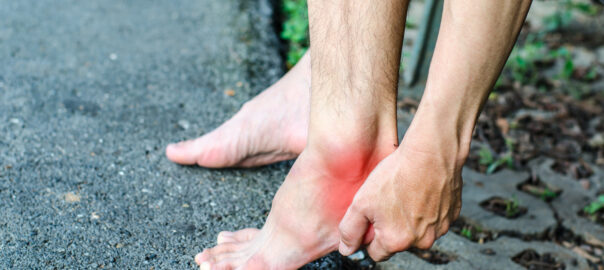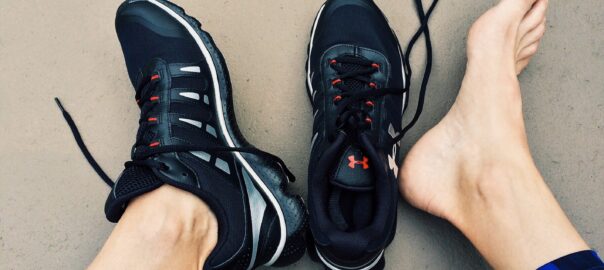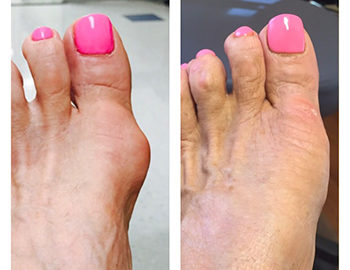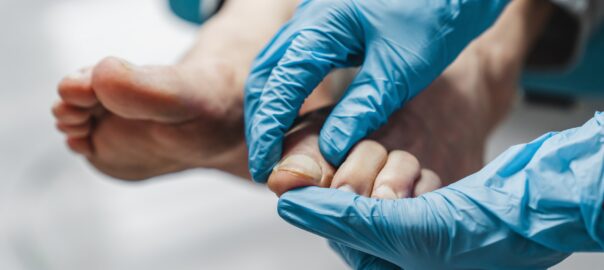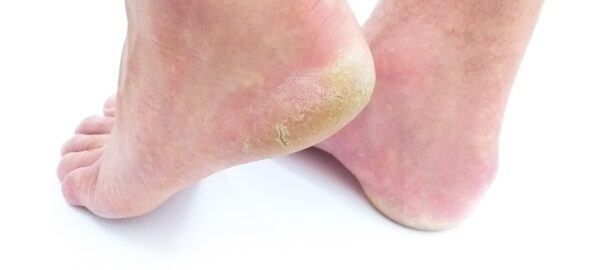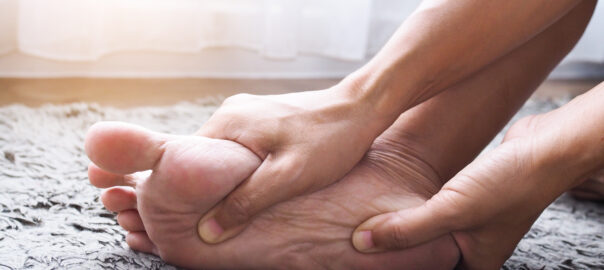Housecall podiatrists at Illinois Mobile Foot Care treat ankle pain. The ankle is a complex and hard-working joint that bears multiple times the weight of your body with each step. Sometimes an ankle sprain or other condition will stop the joint from doing its work, and the ankle joint seems to lock up.
The term “ankle lock” can refer to a few different situations involving the ankle joint and cause ankle pain. It’s important to distinguish between these situations, as they have different causes and implications:
- Ankle Joint Locking due to Injuries or Structural Issues: Sometimes, the ankle joint can feel like it’s “locking” due to injuries or structural issues. This could be the result of a torn ligament, a bone fragment, or even a dislocation. These conditions might cause a sensation of the joint getting stuck or locked in a certain position. Conditions like ankle impingement or loose bodies within the joint can also lead to similar sensations.
- Ankle Joint Instability: On the flip side, if the ligaments supporting the ankle are injured or weakened, it can lead to a sense of instability. This instability can sometimes manifest as a feeling of the ankle giving way or “locking” as the joint moves in ways it’s not properly stabilized to handle.
- Muscle Cramps or Spasms: Muscle cramps or spasms in the calf or ankle muscles can lead to a sensation of “locking.” When a muscle suddenly contracts and doesn’t relax properly, it can cause discomfort and a sensation of immobility.
- Achilles Tendon Issues: Problems with the Achilles tendon, such as tendonitis or a partial tear, can cause pain and stiffness in the ankle area, potentially giving rise to a feeling of “locking.”
- Synovitis: Synovitis is inflammation of the synovial membrane that lines the joint. This inflammation can lead to swelling and reduced joint movement, which might be interpreted as the joint “locking.”
- Neurological Issues: In some cases, neurological conditions can affect the perception of joint movement and position. Conditions like dystonia, where muscles contract involuntarily, could potentially cause a sensation of “locking.”
If you are experiencing a recurring sensation of your ankle locking or have concerns about your ankle’s health, call housecall podiatrists at Illinois Mobile Foot Care at 312-998-0974. Our Chicago podiatrists can provide a proper diagnosis based on your symptoms, medical history, and potentially recommend imaging studies or other diagnostic tests to identify the underlying cause and determine the appropriate treatment.





